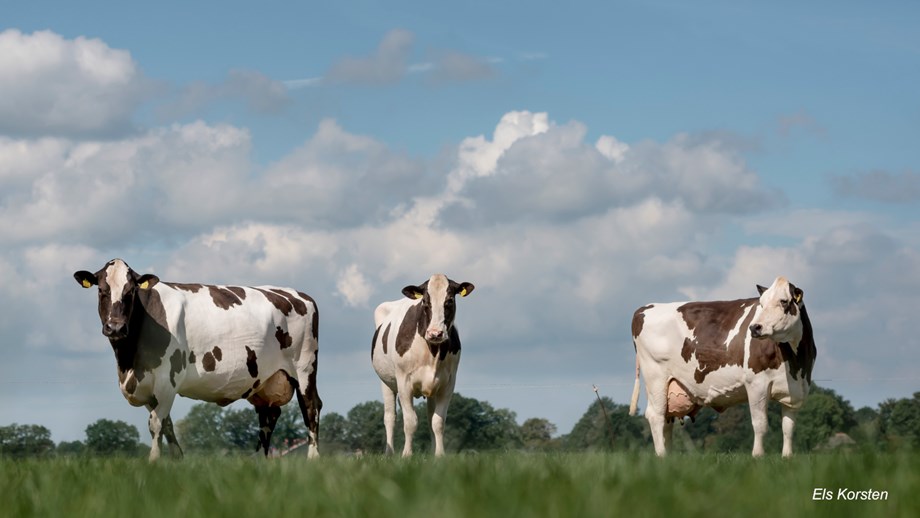There are three different groups of health traits included in the TMI for Norwegian Red. These are udder health, claw health and other disease resistance.
The estimation of breeding values for all the health traits are based on records from the Norwegian Dairy Herd Recoding system (NDHRS). Each veterinary treatments of every cow are reported to the NDHRS by veterinarians. Claw disorders are defined based on the Nordic claw health atlas, and each occurrence of claw disorders at claw trimming are reported to the NDHRS by claw trimmers, veterinarians or farmers.
Udder health index (8% of TMI)
Udder health (mastitis) is the most common and costly disease in dairy cattle. The Norwegian Red has a low frequency of clinical mastitis (CM) partly due to genetic progress in resistance to mastitis.
The udder health index consists of breeding values for CM and somatic cell count (SCC). The direct trait CM is defined based on information on veterinary treatments. SCC is an indicator trait genetically correlated to CM, The two sources of information is combined in an udder health index
| Traits | Relative weight (%) |
| Somatic cell count | 66 |
| Clinical mastitis | 34 |
Claw Health index (4% of TMI)
Breeding values are calculated for corkscrew claw and two groups of claw disorders (infectious claw disorders and laminitis-related claw disorders). The cows are defined as affected (1) or normal (0) for each of the claw health traits.
Corkscrew claw
It is assessed whether the claw shows a tendency to be twisted (mild) or is clearly twisted (severe). All occurrences of corkscrew claws at claw trimming, from mild to severe, are reported to the NDHRS.
Twisted claws are recorded by breeding advisers in connection with conformation scoring, and this information are included as a genetic correlated trait when the breeding value for corkscrew claw is calculated.
Infectious claw disorders
Infectious claw disorders include digital dermatitis, mild dermatitis, heel-horn erosions and interdigital dermatitis
Laminitis-related claw disorders
Laminitis-related claw disorders consist of sole ulcers, sole hemorrhages, white line fissure and white line abscess.
Other disease resistance (0% of TMI)
The trait "Other disease resistance" is a composite trait group including the most common diseases other than mastitis, milk fever, ketosis, retained placenta, ovarian cysts, metritis and silent heat.
The traits are defined as 0 or 1. The cow is defined as sick (1) for the individual trait if she has a registered case. Otherwise she is defined as healthy (0).
